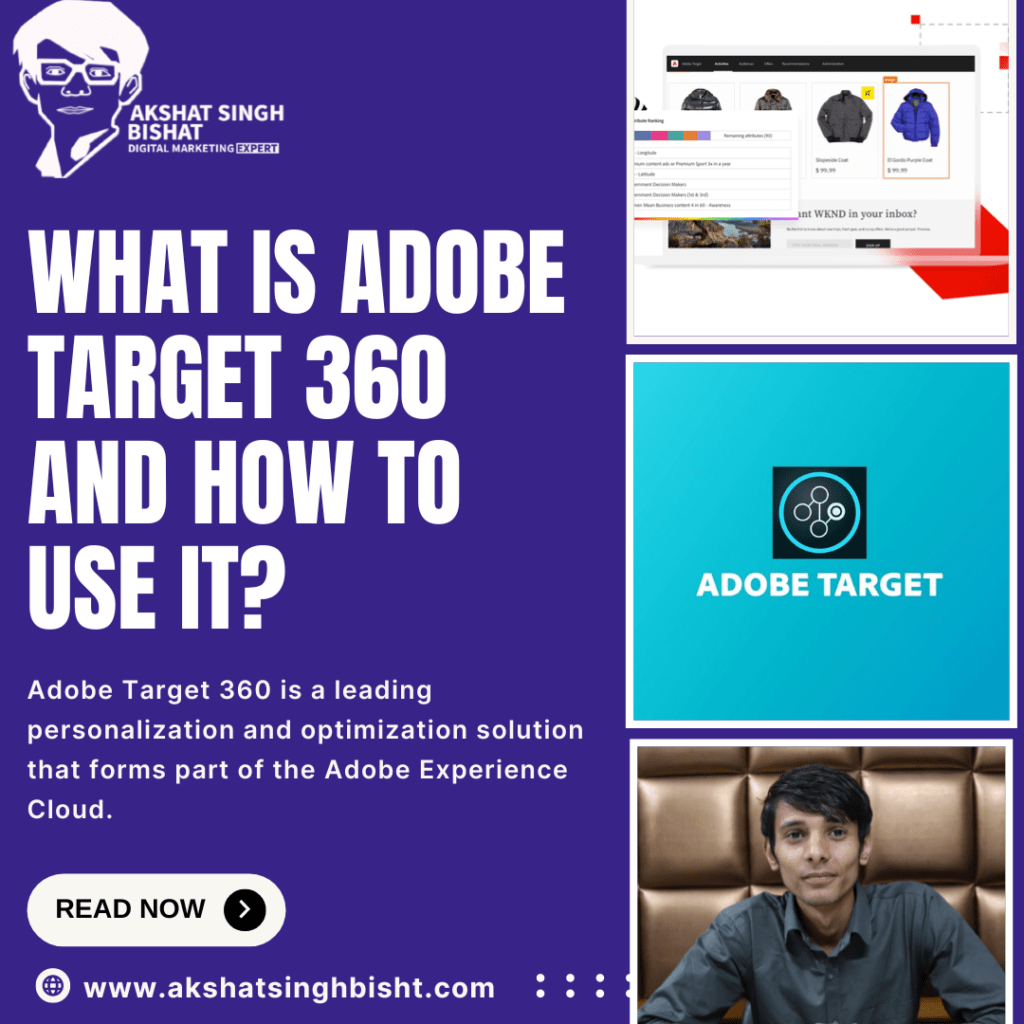In the rapidly evolving digital landscape, personalization and optimization are crucial for delivering exceptional customer experiences. Adobe Target is a robust solution designed to help businesses achieve these goals. This comprehensive guide delves into the intricacies of Adobe Target , covering its features, benefits, implementation strategies, and practical applications. By the end of this guide, you will have a thorough understanding of how to leverage Adobe Target to enhance your digital marketing efforts and deliver personalized, optimized experiences to your audience.

Adobe Target is a leading personalization and optimization solution that forms part of the Adobe Experience Cloud. It allows businesses to create and deliver personalized experiences across web, mobile, email, and other digital channels. Adobe Target leverages machine learning and artificial intelligence to automate the personalization process, enabling marketers to test, target, and optimize their content and offers effectively.
Adobe Target was originally part of Omniture, a company acquired by Adobe in 2009. Since then, Adobe has continuously enhanced and expanded the capabilities of Adobe Target, integrating advanced features and improving its usability. Adobe Target introduced as part of Adobe’s marketing cloud strategy, represents a significant evolution, providing comprehensive tools for real-time personalization and optimization.
A/B testing is a fundamental feature of Adobe Target allowing businesses to compare two versions of a webpage or app to determine which performs better. Key aspects include:
Multivariate testing takes A/B testing a step further by testing multiple variables simultaneously to understand their combined impact on user behavior. Adobe Target simplifies MVT with:
Adobe Target leverages machine learning to deliver automated personalization. Key features include:
Adobe Target allows for segment-specific targeting, enabling businesses to deliver personalized experiences to specific audience segments. Key features include:
Experience Targeting (XT) in Adobe target enables users to deliver tailored experiences based on predefined criteria. Key aspects include:
Adobe Target recommendations engine provides personalized product or content recommendations. Key features include:
By delivering personalized and optimized experiences, Adobe target helps increase user engagement, leading to higher satisfaction and loyalty.
Personalization and optimization efforts can significantly improve conversion rates, turning more visitors into customers.
Adobe target provides comprehensive insights and analytics, enabling businesses to make informed, data-driven decisions about their digital strategies.
With automation and advanced targeting capabilities, Adobe target streamlines the personalization process, making it more efficient and scalable for businesses of all sizes.
Adobe target integrates seamlessly with other Adobe Experience Cloud solutions, as well as third-party tools, providing a comprehensive ecosystem for digital marketing and personalization.
Adobe target’s architecture includes several core components designed to deliver robust personalization and optimization capabilities:
Adobe target offers flexible deployment models to suit different business needs:
Adobe target integrates with various Adobe and third-party tools, including:
Implementing Adobe target involves several key steps:
To ensure a successful implementation, consider these best practices:
While Adobe target offers significant benefits, businesses may face challenges during implementation, including:
Setting up tests in Adobe target involves several steps:
To personalize experiences using Adobe target:
Adobe target provides robust analytics and reporting features to help you analyze the results of your tests and personalization efforts:
E-commerce businesses use Adobe target to personalize product recommendations, optimize landing pages, and deliver targeted offers, enhancing the shopping experience and increasing sales.
Travel and hospitality companies leverage Adobe target to deliver personalized travel recommendations, optimize booking experiences, and provide tailored offers, improving customer satisfaction and loyalty.
Financial institutions use Adobe target to personalize content and offers based on customer profiles and behaviors, enhancing user engagement and driving conversions.
Media companies utilize Adobe target to personalize content recommendations, optimize user experiences, and increase engagement and subscriptions.
Healthcare organizations employ Adobe target to deliver personalized health information and resources, improving patient engagement and outcomes.
Adobe target is a powerful and comprehensive solution for personalization and optimization, enabling businesses to deliver exceptional digital experiences to their audiences. By understanding the features, benefits, and practical applications of Adobe target, businesses can leverage this tool to enhance their digital marketing efforts and achieve their goals. With continuous advancements in AI, machine learning, and integration capabilities, Adobe target remains at the forefront of personalization and optimization solutions, helping businesses stay competitive in the digital age.
Akshat’s passion for marketing and dedication to helping others has been the driving force behind AkshatSinghBisht.com. Known for his insightful perspectives, practical advice, and unwavering commitment to his audience, Akshat is a trusted voice in the marketing community.
If you have any questions simply use the following contact details.
